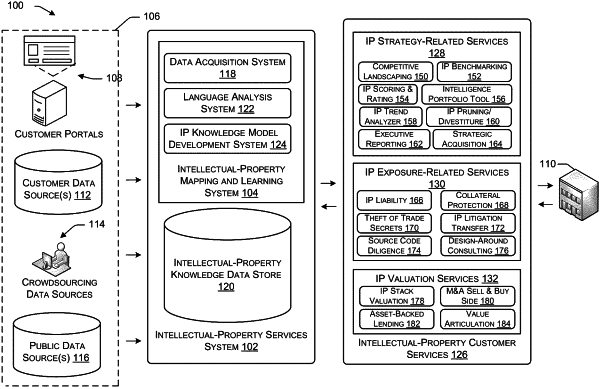| CPC G06Q 50/184 (2013.01) [G06Q 30/0278 (2013.01); G06Q 30/0627 (2013.01)] | 18 Claims |

|
1. A method comprising:
receiving information indicating revenue associated with a product;
generating, by an intellectual-property mapping and learning system, a technology taxonomy including classifications of products;
determining, by the intellectual-property mapping and learning system, a classification of the product based at least partly on a technical feature of the product, wherein determining the classification of the product includes performing a linguistic analysis of information related to the product and the technical features of the product;
identifying a patent claim that corresponds to the product based at least partly on the patent claim being associated with the classification;
identifying words included in the patent claim;
generating a machine learning model configured to determine patent claim breadth;
training the machine learning model using a training dataset such that a trained machine learning model is generated;
determining a breadth of the patent claim utilizing one or more linguistic analysis techniques and the trained machine learning model configured to determine patent claim breadth;
identifying, utilizing the intellectual-property mapping and learning system, a portion of a technology taxonomy generated by the intellectual-property mapping and learning system associated with the classification;
utilizing the one or more linguistic analysis techniques to determine, by the intellectual-property mapping and learning system, a portion of the revenue to apportion to the patent claim based at least partly on the breadth of the patent claim as determined by the trained machine learning model with respect to other patent claims included in the portion of the technology taxonomy generated by the intellectual-property mapping and learning system; and
determining a measure of value of the patent claim based at least partly on the portion of the revenue apportioned to the patent claim.
|